-
 bitcoin
bitcoin $109547.008142 USD
0.04% -
 ethereum
ethereum $4011.838726 USD
-0.05% -
 tether
tether $1.000402 USD
-0.01% -
 xrp
xrp $2.798606 USD
0.88% -
 bnb
bnb $970.877944 USD
1.39% -
 solana
solana $202.237275 USD
-0.95% -
 usd-coin
usd-coin $0.999673 USD
0.00% -
 dogecoin
dogecoin $0.229294 USD
-1.15% -
 tron
tron $0.336370 USD
-0.45% -
 cardano
cardano $0.777260 USD
-1.66% -
 hyperliquid
hyperliquid $45.503019 USD
1.73% -
 ethena-usde
ethena-usde $1.000362 USD
0.01% -
 chainlink
chainlink $20.785303 USD
-1.10% -
 avalanche
avalanche $28.755822 USD
-0.11% -
 stellar
stellar $0.358303 USD
-0.48%
What does Vol's continuous shrinking volume and sideways trading indicate? Will the market change?
Vol's shrinking volume and sideways trading suggest market consolidation, indicating uncertainty and a potential precursor to significant price movements.
May 22, 2025 at 04:29 am
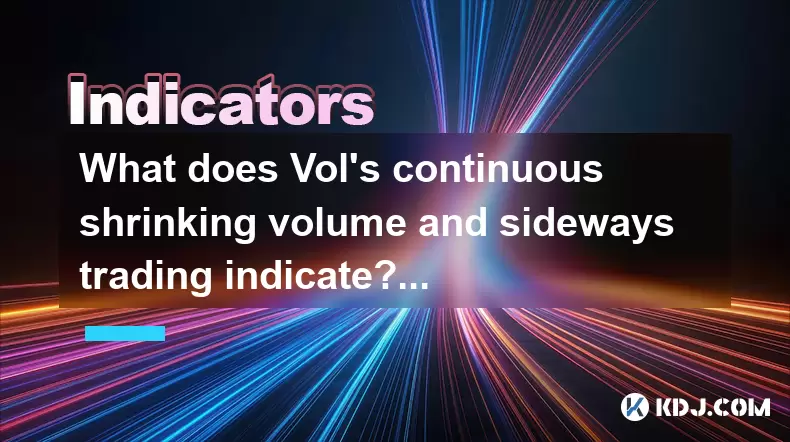
The phenomenon of Vol's continuous shrinking volume and sideways trading can provide significant insights into the current state of the cryptocurrency market. When we observe a consistent decrease in trading volume alongside a market that is trading sideways, it often indicates a period of consolidation. This consolidation phase is characterized by a lack of significant price movement, suggesting that the market is in a state of equilibrium where neither bulls nor bears are in control. This can be seen as a time of uncertainty, where traders and investors are waiting for new catalysts to drive the market in one direction or another.
Understanding Shrinking Volume
Shrinking volume in the context of Vol, or any cryptocurrency, refers to a reduction in the number of shares or tokens being traded over a given period. This decrease in activity can signal several things. Firstly, it might suggest that fewer traders are interested in the asset, leading to lower liquidity. Secondly, it can indicate that the market is taking a breather after a period of high volatility, allowing traders to reassess their positions. Lastly, it can be a precursor to a significant price movement, as the market often consolidates before breaking out in either direction.
The Implications of Sideways Trading
Sideways trading occurs when the price of an asset moves within a relatively narrow range over an extended period. For Vol, this can mean that the price is oscillating between a certain high and low without making significant progress in either direction. This type of trading pattern suggests that the market is in a state of indecision, with neither buyers nor sellers able to take control. It can also indicate that the market is waiting for new information or a catalyst to trigger a breakout.
Historical Context and Market Sentiment
To better understand what Vol's continuous shrinking volume and sideways trading might indicate, it's helpful to look at historical data. In the past, similar patterns have often preceded significant market movements. For instance, after a period of consolidation and low volume, a breakout can occur, leading to a sharp increase or decrease in price. Analyzing market sentiment through social media, forums, and news can also provide clues about potential future movements. If sentiment is generally positive despite the lack of volume and movement, it might suggest that a bullish breakout is more likely.
Technical Analysis Indicators
Technical analysis can offer further insights into Vol's continuous shrinking volume and sideways trading. Key indicators to watch include the Bollinger Bands, which can help identify the volatility and potential breakouts. When the bands are narrow, it suggests low volatility and a potential consolidation phase. Another useful indicator is the Relative Strength Index (RSI), which can show whether the asset is overbought or oversold. If the RSI remains within a neutral range during the sideways trading, it further confirms the market's indecision.
Potential Market Changes
While Vol's continuous shrinking volume and sideways trading does not guarantee a market change, it sets the stage for potential shifts. A breakout from the current range could signal the start of a new trend. If the volume increases alongside a price breakout, it can confirm the strength of the new trend. Conversely, if the volume remains low even after a breakout, it might suggest that the move is not supported by significant market interest and could be short-lived.
Monitoring for Catalysts
To anticipate potential market changes, it's crucial to monitor for catalysts that could trigger a breakout. These catalysts can include macroeconomic factors, regulatory news, technological developments, or significant shifts in market sentiment. For instance, if a major cryptocurrency exchange announces the listing of Vol, it could lead to increased trading volume and a potential price movement. Similarly, positive or negative news about the underlying technology or team behind Vol can also act as a catalyst.
Strategies for Trading During Consolidation
During periods of Vol's continuous shrinking volume and sideways trading, traders can adopt various strategies to navigate the market. One approach is range trading, where traders buy at the lower end of the range and sell at the upper end, profiting from the oscillations. Another strategy is to wait for a breakout and then trade in the direction of the new trend. This requires patience and a keen eye for volume and price action signals. Additionally, traders can use options to hedge their positions or speculate on potential breakouts without taking a direct position in the asset.
Risk Management in Uncertain Times
Given the uncertainty associated with Vol's continuous shrinking volume and sideways trading, effective risk management is essential. Traders should set clear stop-loss orders to limit potential losses if the market moves against their positions. It's also important to diversify investments across different assets to mitigate risk. Additionally, maintaining a disciplined approach to trading, avoiding emotional decisions, and sticking to a well-thought-out trading plan can help navigate the market during these times.
Frequently Asked Questions
Q: How can I identify the beginning of a breakout from a consolidation phase?A: To identify the beginning of a breakout, look for a significant increase in trading volume accompanied by a price movement outside the established range. Technical indicators like the Bollinger Bands can also help; a breakout from the bands can signal the start of a new trend. Additionally, monitoring news and market sentiment can provide early warnings of potential catalysts that could trigger a breakout.
Q: What are some common mistakes traders make during periods of low volume and sideways trading?A: Common mistakes include overtrading in an attempt to capitalize on minor price movements, ignoring risk management principles, and failing to wait for a confirmed breakout before taking a position. Traders may also become impatient and make impulsive decisions based on short-term fluctuations rather than sticking to a long-term strategy.
Q: Can fundamental analysis help predict market changes during Vol's consolidation phase?A: Fundamental analysis can provide insights into the long-term value and potential of Vol, but it may not directly predict short-term market changes during consolidation. However, significant fundamental developments, such as technological advancements or partnerships, can act as catalysts for breakouts. Therefore, keeping an eye on fundamental news can complement technical analysis in anticipating market shifts.
Q: How should I adjust my trading strategy if Vol's volume and price continue to remain low?A: If Vol's volume and price remain low, consider adopting a more conservative trading strategy. Focus on range trading within the established price range, and be prepared to wait for a breakout before taking larger positions. Ensure your risk management is robust, and consider diversifying your portfolio to reduce exposure to Vol until a clear trend emerges.
Disclaimer:info@kdj.com
The information provided is not trading advice. kdj.com does not assume any responsibility for any investments made based on the information provided in this article. Cryptocurrencies are highly volatile and it is highly recommended that you invest with caution after thorough research!
If you believe that the content used on this website infringes your copyright, please contact us immediately (info@kdj.com) and we will delete it promptly.
- XRP, Bitcoin Price Predictions: Decoding the Crypto Crossroads
- 2025-09-28 08:25:12
- ChatGPT, Crypto, and Crystal Balls: Predictions for a Wild 2025
- 2025-09-28 08:45:12
- Crypto Clash: Can Kaspa and Pi Coin Compete in a Remittix World?
- 2025-09-28 08:45:12
- Riding the Floki Wave: Gauging Gains with Social Engagement and Bottom Signals
- 2025-09-28 08:25:12
- Bitcoin's $109,000 Support: Will It Hold or Fold?
- 2025-09-28 09:05:14
- Crypto 2025: MoonBull Charges Ahead, Leaving Pepe and Mog in the Dust
- 2025-09-28 08:50:12
Related knowledge
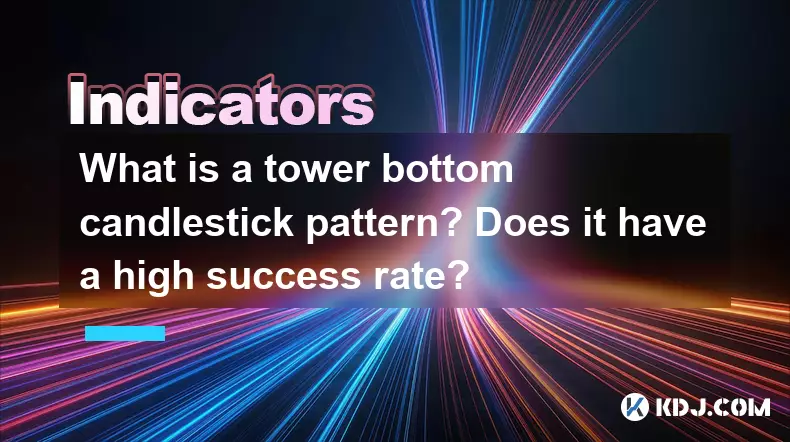
What is a tower bottom candlestick pattern? Does it have a high success rate?
Sep 22,2025 at 07:18am
Tower Bottom Candlestick Pattern Explained1. The tower bottom candlestick pattern is a reversal formation that typically appears at the end of a downt...
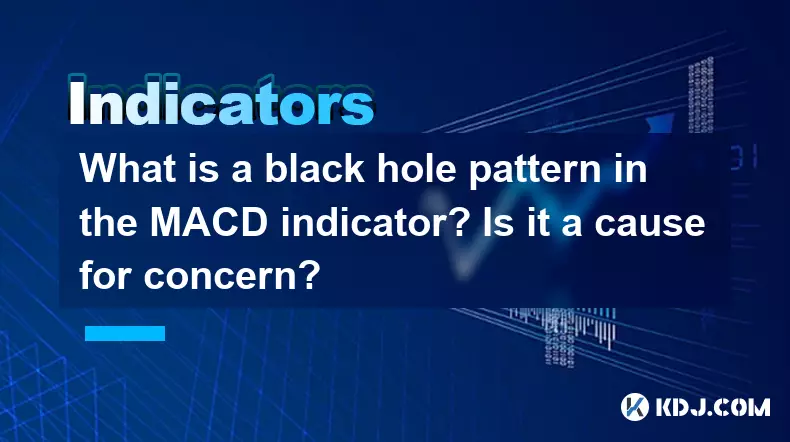
What is a black hole pattern in the MACD indicator? Is it a cause for concern?
Sep 21,2025 at 06:54pm
Bitcoin's Role in Decentralized Finance1. Bitcoin remains the cornerstone of decentralized finance, serving as a benchmark for value and security acro...

How can I use the psychological line (PSY) to determine market sentiment?
Sep 17,2025 at 02:19pm
Understanding the Psychological Line (PSY) in Cryptocurrency TradingThe Psychological Line, commonly referred to as PSY, is a momentum oscillator used...
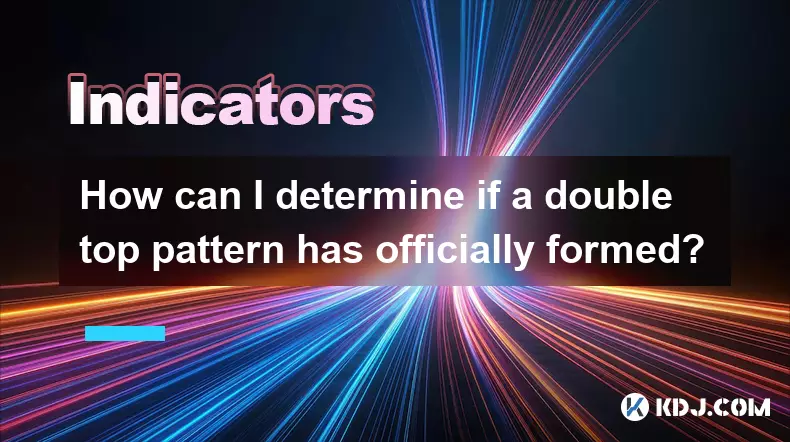
How can I determine if a double top pattern has officially formed?
Sep 21,2025 at 03:18am
Understanding the Structure of a Double Top Pattern1. A double top pattern consists of two distinct peaks that reach approximately the same price leve...
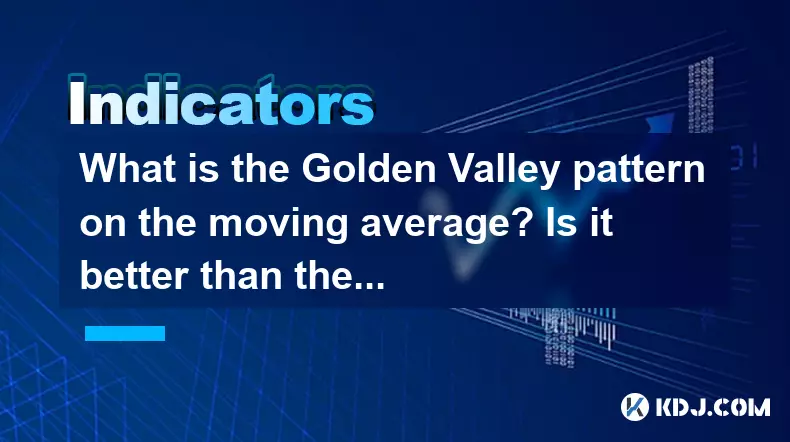
What is the Golden Valley pattern on the moving average? Is it better than the Silver Valley pattern?
Sep 21,2025 at 02:54pm
Understanding the Golden Valley Pattern in Moving Averages1. The Golden Valley pattern is a technical formation observed in cryptocurrency price chart...

What does a death cross of the RSI in the strong zone (above 50) mean?
Sep 17,2025 at 10:54pm
Understanding the Death Cross in RSI Context1. The term 'death cross' is traditionally associated with moving averages, where a short-term average cro...

What is a tower bottom candlestick pattern? Does it have a high success rate?
Sep 22,2025 at 07:18am
Tower Bottom Candlestick Pattern Explained1. The tower bottom candlestick pattern is a reversal formation that typically appears at the end of a downt...

What is a black hole pattern in the MACD indicator? Is it a cause for concern?
Sep 21,2025 at 06:54pm
Bitcoin's Role in Decentralized Finance1. Bitcoin remains the cornerstone of decentralized finance, serving as a benchmark for value and security acro...

How can I use the psychological line (PSY) to determine market sentiment?
Sep 17,2025 at 02:19pm
Understanding the Psychological Line (PSY) in Cryptocurrency TradingThe Psychological Line, commonly referred to as PSY, is a momentum oscillator used...

How can I determine if a double top pattern has officially formed?
Sep 21,2025 at 03:18am
Understanding the Structure of a Double Top Pattern1. A double top pattern consists of two distinct peaks that reach approximately the same price leve...

What is the Golden Valley pattern on the moving average? Is it better than the Silver Valley pattern?
Sep 21,2025 at 02:54pm
Understanding the Golden Valley Pattern in Moving Averages1. The Golden Valley pattern is a technical formation observed in cryptocurrency price chart...

What does a death cross of the RSI in the strong zone (above 50) mean?
Sep 17,2025 at 10:54pm
Understanding the Death Cross in RSI Context1. The term 'death cross' is traditionally associated with moving averages, where a short-term average cro...
See all articles










































































